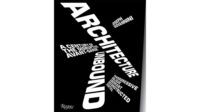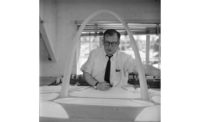Kurt Forster’s book on the influential German architect Friedrich Schinkel breaks decisively from the traditional formats of either a chronological biography or a systematic analysis of an architect’s work as it develops from “early” to “late” periods. In assessing Schinkel’s legacy, Forster cuts through the art-historical categorizations such as “neoclassicism” or “classical-romanticism” by which Schinkel is usually identified (e.g., his Altes Museum in Berlin, 1830, or his Court Gardener’s House of 1833 at Sanssouci in Potsdam.)
Instead, Forster looks for generative principles underlying the great architect’s creative output, framing the book as a series of punctuated moments in Schinkel’s life. Each one is treated as some kind of archeological dig and subsequent reconstruction, and each linked to the next in a kind of montage.
This, however, is no Proustian exercise of imagining the architect’s memory or a soliloquy on the springs of creativity (although we encounter both along the way). These juxtapositions remind us of the literary fragments assembled by Walter Benjamin in his unfinished Arcades Project of 1927 through 1940 or, more recently, W.G Sebald’s in Austerlitz, where a narrator’s long walks and encounters with an art historian are much like Forster’s own “meander” with Schinkel.
Forster’s ability to seemingly channel the thoughts of the architect impels us to feel that we are deeply immersed in Schinkel’s mental processes. And Forster evokes the social and intellectual circles in which the architect and artist moved, and the recollections of friends—sculptors, painters, and archeologists—who knew him well. As an artist, Schinkel, as early as 1808, executed The Panorama of Palermo, 15 by 135 feet, in Berlin, and at the end of his life, had plans to create a panorama that showed a history of architecture. It didn’t happen, as we learn from Forster’s interrogation of Schinkel’s life, where he details the illness that led to its end, at 60.
The book is an entirely distinctive genre within the world of architectural monographs; Forster’s investigation alights with wit on topics appealing to his subject’s imagination, and he finds meaning in the slightest signal. An example: Schinkel as a builder was naturally interested in stones (along with such materials as cast iron). Like his contemporary Johann Wolfgang von Goethe, his curiosity led to an interest in the new and emerging science of geology and, like Ruskin later, directed him to a study of the forms of mountains and, recursively, to the forms of stone buildings and their monumental history.
We might link the cubic form of Schinkel’s historic Neue Wache in Berlin (1818), supported at the rear with pylons, and at its front with a developed Doric portico, and set in a gridded miniature forest, to the first primitive altar stone, called out by Hegel as the essential “symbolic” form of architecture. Similarly, we can, with Forster, trace the history of antiquity literally collaged in fragments onto the walls of the garden court of his Schloss Glienecke (1829) in Potsdam, which grew into a museum of sorts with the expanding collection of Prince Karl of Prussia.
This reading of history into and through the walls is performed again in Schinkel’s brilliant yet understated restoration of a country house, “Schlösschen,” in Tegel, for historian Wilhelm von Humboldt, in 1826. Here the original four defensive turrets at the corners were inscribed with bas reliefs from the Temple of the Winds in Athens (100–50 B.C.E) and the entryway staged as a “restoration” of an antique atrium.
With its color illustrations laid out, framed, and cropped as so many mnemonic guides to an architect long thought to be dry and academic, perhaps the greatest gift of this book is the excitement it conveys about Schinkel and his work.






